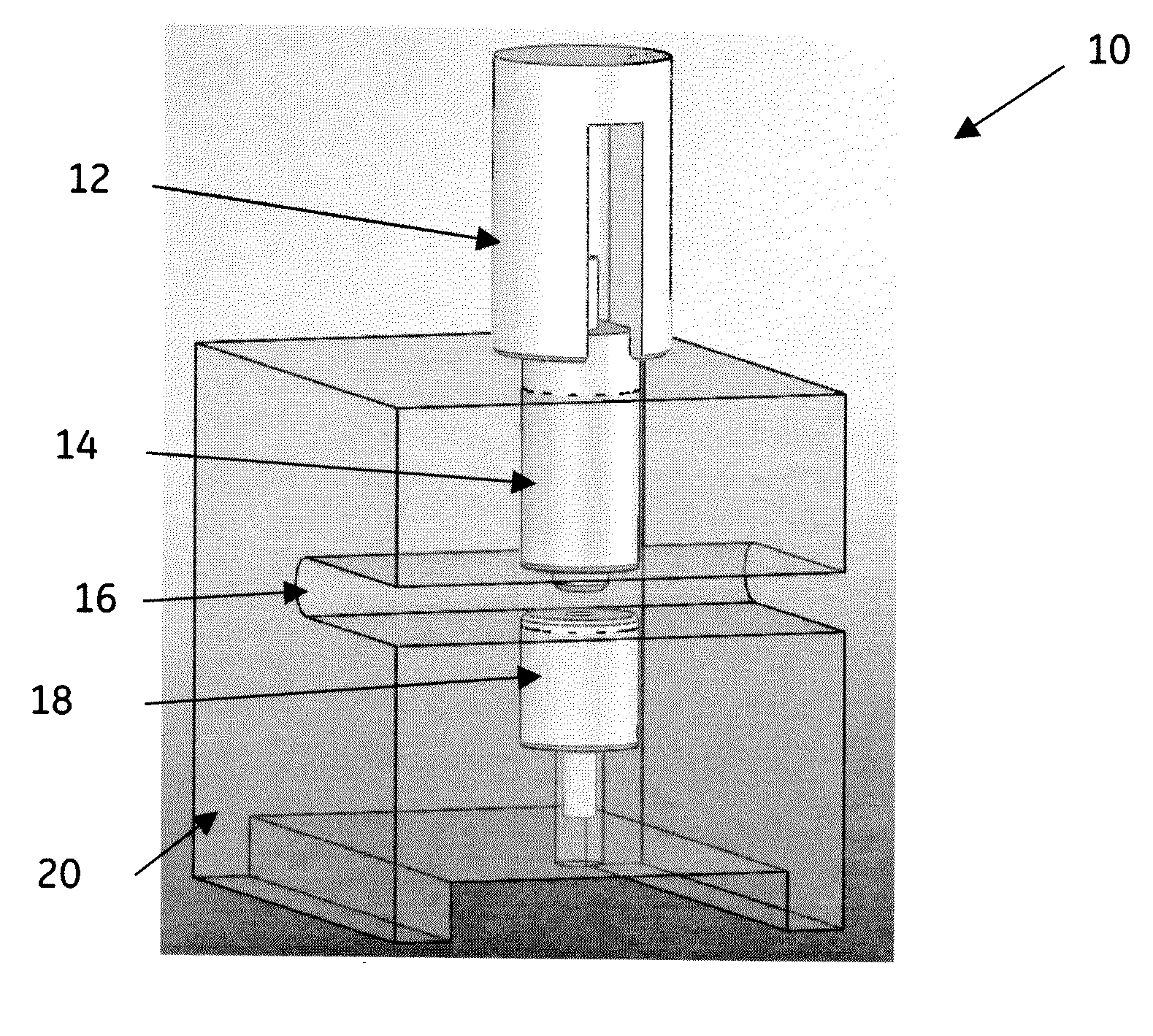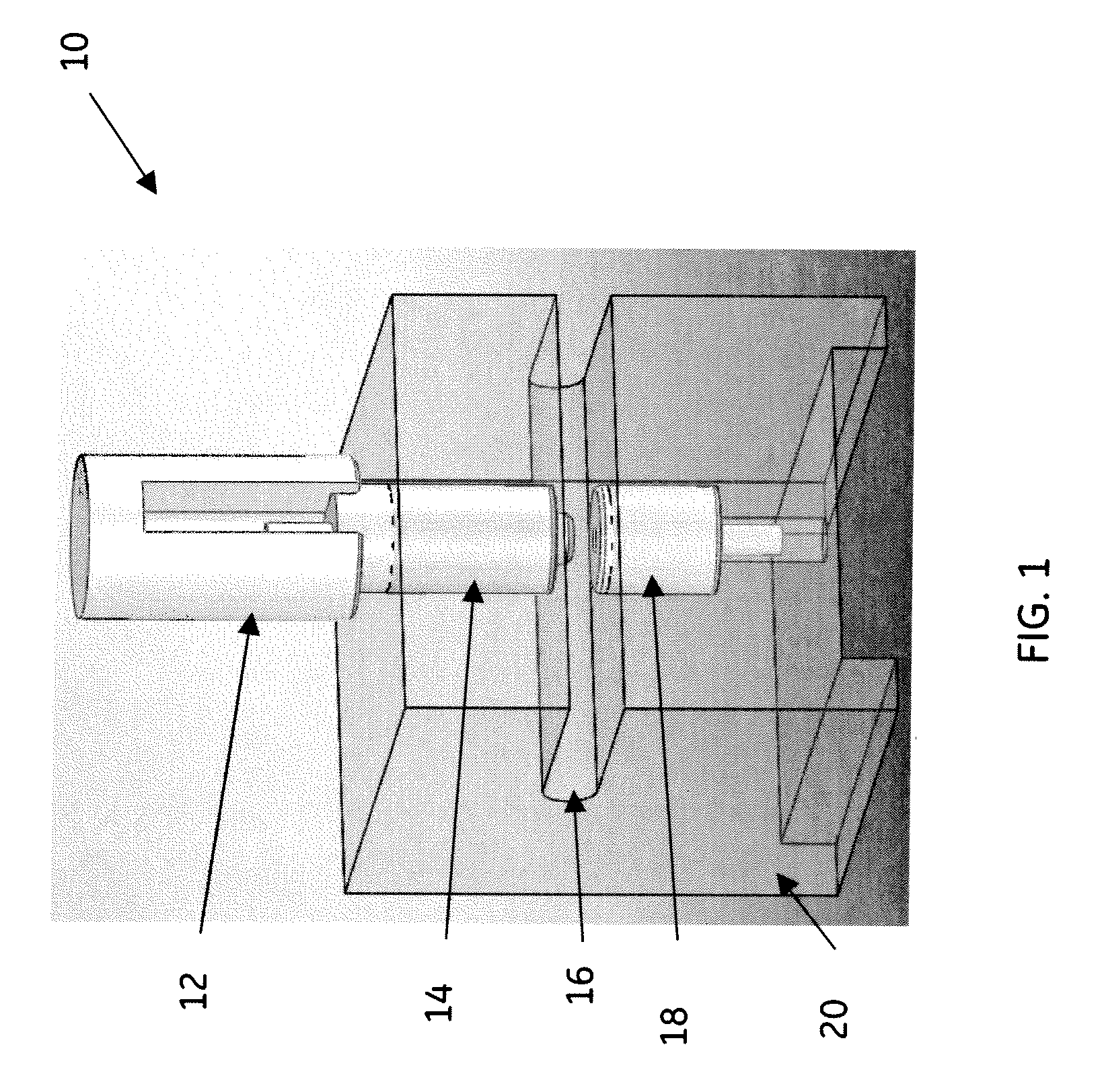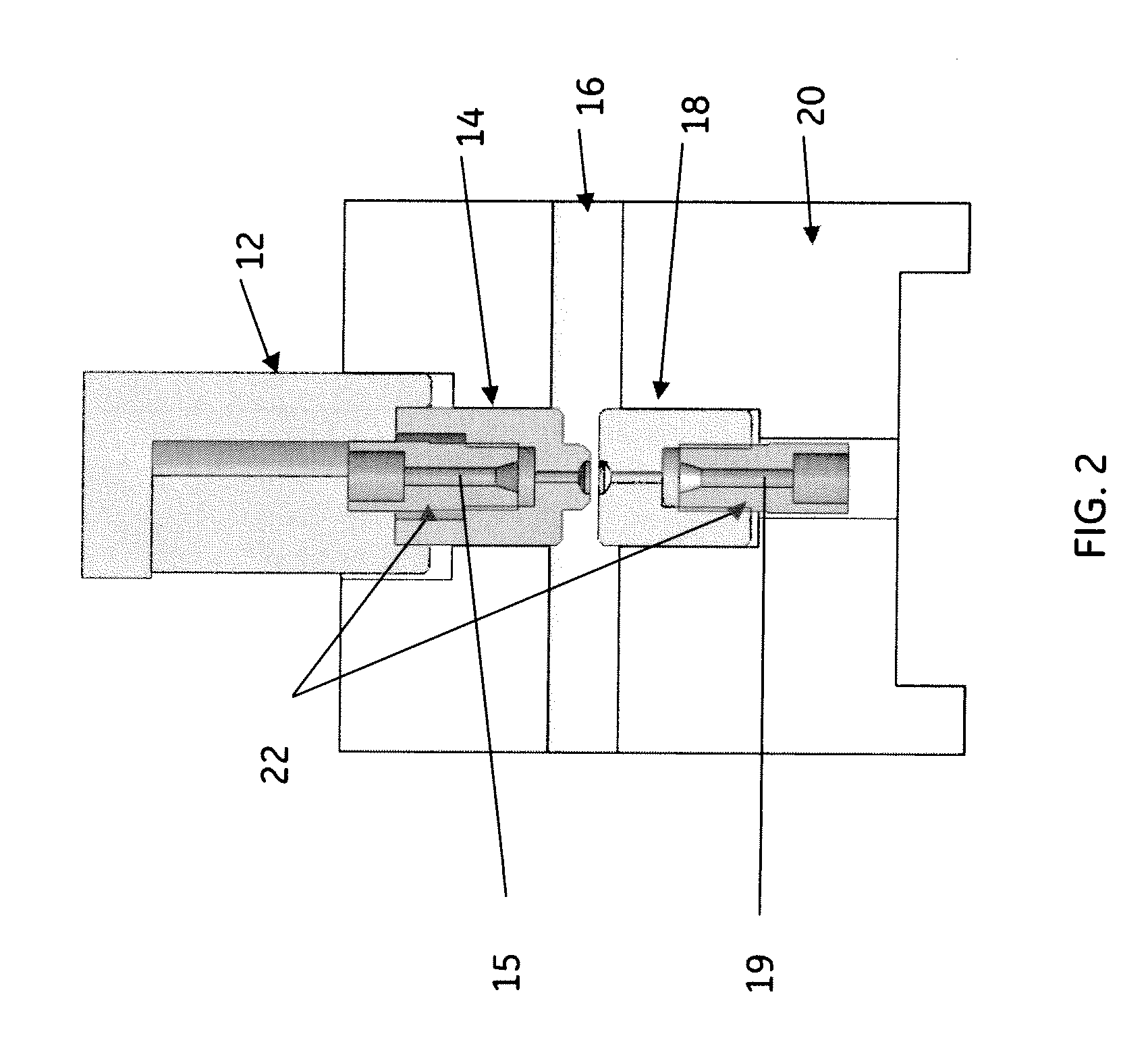Methods and systems for processing samples on porous substrates
a technology of porous substrates and processing methods, applied in the field of methods and systems for processing samples on porous substrates, can solve the problems of cross-contamination between samples, high risk of small cut discs, loss of cut discs, etc., and achieve the effect of overcompensating risks and problems
- Summary
- Abstract
- Description
- Claims
- Application Information
AI Technical Summary
Benefits of technology
Problems solved by technology
Method used
Image
Examples
example
[0041]A non-limiting example of a process used in connection with system, such as for example the system shown in FIG. 8, variably may comprise the following actions. A well plate is transferred from a plate stacker. A vial strip is retrieved from the well plate shuttle and a vial on the vial strip is positioned in the fluid path of sample processing subsystem (e.g. 81). The automated assembly (e.g. 98) retrieves an FTA card from the magazine cassette and moves the FTA card into the imaging field of a camera. The imaging system determines the location of one or more samples on the FTA card. The automated assembly then positions the FTA card within the isolation area and fluid flow path of the compression device. The actuator of the compression device is extended to compress the FTA paper. One of the vials is raised to pierce the cover of the vial. Solvent is then pumped from the manifold through the fluid inlet of the compression device and through isolation area of the sample on th...
PUM
| Property | Measurement | Unit |
|---|---|---|
| diameter | aaaaa | aaaaa |
| diameter | aaaaa | aaaaa |
| diameter | aaaaa | aaaaa |
Abstract
Description
Claims
Application Information
 Login to View More
Login to View More - R&D
- Intellectual Property
- Life Sciences
- Materials
- Tech Scout
- Unparalleled Data Quality
- Higher Quality Content
- 60% Fewer Hallucinations
Browse by: Latest US Patents, China's latest patents, Technical Efficacy Thesaurus, Application Domain, Technology Topic, Popular Technical Reports.
© 2025 PatSnap. All rights reserved.Legal|Privacy policy|Modern Slavery Act Transparency Statement|Sitemap|About US| Contact US: help@patsnap.com



